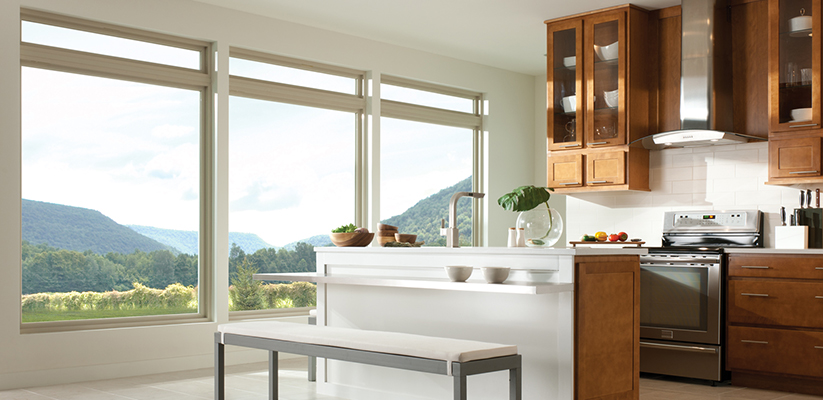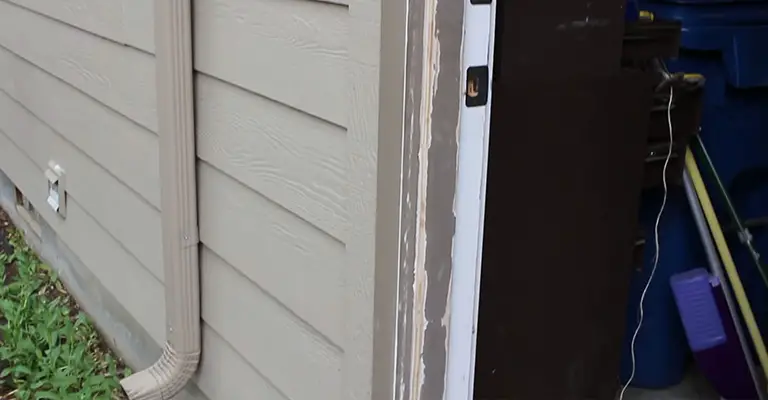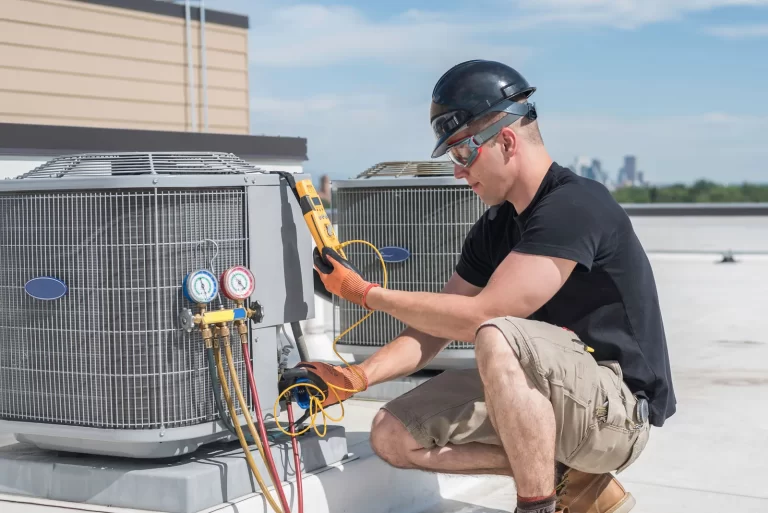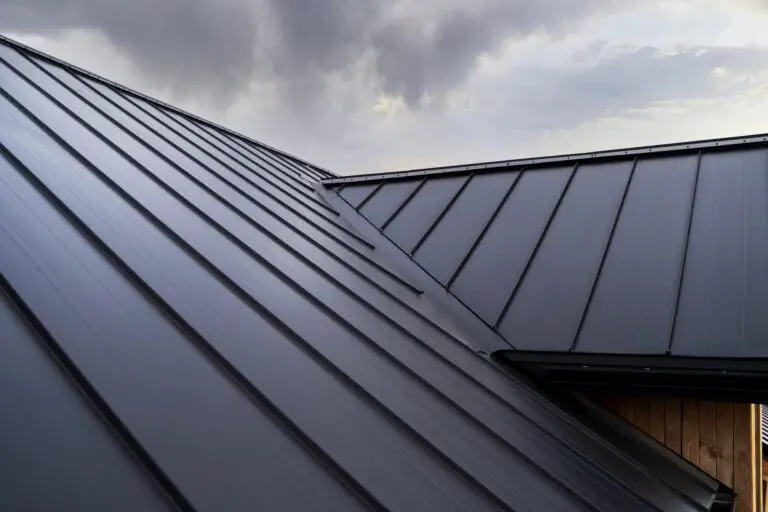Brock Paver Base Reviews
Brock Paver bases are rigid panels made from Polypropylene Code 5 plastic. This environmentally friendly plastic is known for its resilience, thermal insulation properties, and durability.
The material is the same one used for Tupperware, furniture, cars, and countless other products. These lightweight, high-density polypropylene panels are used for paver bases.
To keep the panel edges flush, tongue-and-grooves or shiplap edges are often used. I
What Is Brock PaverBase?
Brock Paver Base eliminates the need for a traditional rock base under pavers and replaces it with a lightweight, high-density plastic panel system.
This plastic is characterized by its high melting point, durability, and flexibility. Due to these characteristics, it is the perfect product for tough applications. Among them are military cold-weather gear and car bumpers used in defensive situations.
In the correct position, the panels lock into place over a thin sand layer due to their “tire tread” texture. Through the overlapping edges of the panels, a uniform “floor” is created for the pavers.
In this way, the weight is evenly distributed over the ground, and the load is spread out. As an underlayment for artificial turf, Brock PaverBase layer technology was originally conceived as a safe way to lay artificial turf.
Over the years, the NCAA, NFL, and local high schools have been replacing the stone bases beneath the turf. Adapting this technology, however, they found it to be superior to more conventional gravel bases when used under patio pavers and stones.
So, How Does It Work?
It is because the panels spread out the load, so a person walking across the patio will feel its weight more widely distributed. In addition to reducing soil pressure, uneven pavement bricks are prevented due to the load distribution.
Considering how new paver products are, it’s unclear how long-term their performance will be. However, preliminary results are promising.
As a bonus, the panels serve as an insulating layer that minimizes problems caused by thawing and refreezing soil. The paver base panels are fitted with holes and channels for water to drain to the sand layer below.
Why Should You Use Brock Paver Base?
With Brock Paver Base, you will not have to use 4-5 bags of dirt base under pavers as you would normally have to do with a traditional rock base. It is less expensive in the long run.
Because Brock Paver Base is lightweight, it is especially suitable for backyard patios and paths, where access can be problematic. It’s like holding hundreds of pounds of rock base in one hand. It isn’t necessary to level the sand as you lay down pavers because they slide in place easily.
Less Digging And Labor Required
When installing a Brock PaverBase, you will not need to dig several inches into the ground to bring the gravel in. As opposed to 6-8 inches, you will only have to dig about 3 inches. The panels also replace 160-200 pounds of the traditional base material.
Drainage
Water can flow through the drainage channels and holes without being trapped on top of the paver base panels or underneath the interlocking components thanks to the drainage channels.
Water can be drained from each panel adequately through its drain holes. In addition to horizontal drainage, Brock PaverBase panels have vertical drainage. Furthermore, it surpasses the horizontal permeability rate of pavers by over 100 inches per hour.
Freeze-Thaw Protection
In addition to being great thermal insulators, these polypropylene paver base panels also act as a thermal blanket. By doing this, the ground below the patio and walkway is less affected by the freeze-thaw cycle. A 6″ to 8″ compacted base cannot provide the same level of protection.
Prevents Damage To Your Landscaping
It will not be necessary to use heavy equipment to clear the area. Consequently, there will be fewer chances that your property will be damaged. Since you won’t be digging deeper, you won’t need to replace grass or repair expensive pipes.
Insulation
Frost will not be able to seep into your soil because polypropylene is an excellent insulator. Water seeping under the pavement should not cause cracks or significant soil shifting, so you won’t see any cracks or significant soil shifting.
Load Transfer
When these panels are laid together, they form one unit. When the interlock is applied on top of them, the load is transferred to a wider area than the patio or walkway. The result is that the pressure on the ground is low.
Allows Installation In Limited Access Areas
It is possible to transport Brock PaverBase to virtually any location. There will be no problems hauling this type of base if you have a fenced-in backyard or a restricted access project site.
Reduces Costs Of Your Project
Brock PaverBase is less expensive than traditional patio bases due to the reduction in material and labor requirements. Also, you won’t be required to hire an expert, which would drive up your costs even more.
Simple To Install
Brock PaverBase does not require any special tools for installation. The razor knife can easily be used to cut them to fit into curves and tight edges. A professional is not necessary since this is about as simple as it gets.
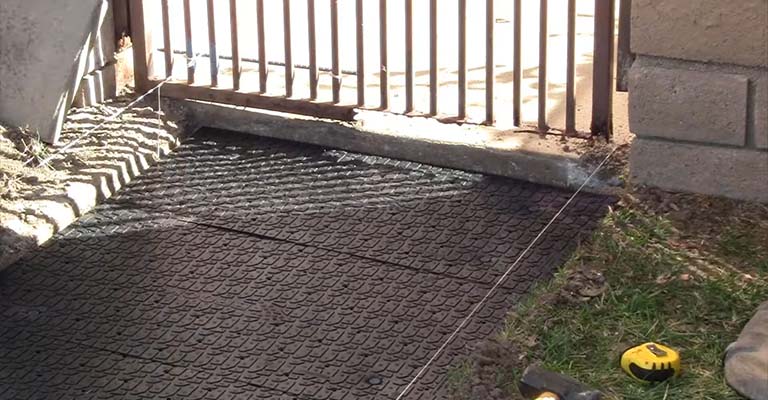
Reduced Installation Time
As opposed to several tons of rock base for a 100 square foot patio, only 20 panels would be needed. Additionally, this results in a lower cost for creating a 100 square foot patio. It also eliminates messy cement pours.
Tips For Building With Paver Base Panels
It is still necessary to prepare the site carefully before laying paver base panels. The grass or other vegetation will need to be removed, and 2 to 4 inches of soil should be removed. Because there is no thick layer of gravel to compensate for uneven ground, you must also remove soil evenly, leaving a flat surface.
There shouldn’t be any more than a half-inch difference in flatness over an area after excavation and grading. The soil needs to be tamped down using a plate compactor before being covered in landscape fabric and sand.
For the paver base panels to be laid flat and slope appropriately, the sand layer must be screeded. Over the screeded sand layer, lay the paver base panels. Fast, simple installation is made possible by the lightweight and easy-to-cut panels. For edge details and offsetting the panels, follow the manufacturer’s instructions.
You will need to put a layer of sand over the panels if you plan to install stones of different thicknesses.
Downsides Of Brock PaverBase
Brock PaverBase offers several benefits, but we should take a more comprehensive look at it. There are a few negative aspects associated with this product:
Uncertain Lifespan
Polypropylene is a durable material, resistant to cracking, decay, and mold, but it hasn’t long been used for paver bases. It’s unclear how long-term the performance of paver bases will be since they have only been around for a few years.
Issues Related To Shifting
After a year or two, a lot of consumers report their patios to look “wavy” as the panels underneath their pavers shift. It is possible to fix the problem by compacting the soil under it with a tamper after you dig a few inches. Finally, lay the pavers in such a way that there will be minimal shifting over time.

Frequently Asked Questions
1. What is the best way to cut the material to fit?
A razor knife can be used to cut Brock Paver Base for curves and edges, so no special tools are needed.
2. How heavy are the panels?
The total weight of a 55 square foot area covered by Brock Paver Base panels is 12 pounds. Over the same area, that would be about 1/100th the weight of the stone. The base can fit in the back of a pick-up truck and be moved by one person.
3. How well does Brock Paver Base drain?
With a vertical permeability rate of more than 100 inches per hour, Brock Paver base is far superior to regular pavers’ permeability rate. Water also drains not only vertically but also horizontally through Brock Paver Base, so it can easily be moved from the area.
4. How does the material change over time? Is it degradable?
Polypropylene is an extremely durable and long-lasting material that’s used in a wide variety of construction materials, such as pipes, geofabrics, and rope. The value of the material is its durability, its resistance to mold, bacteria, decay, cracking, and in the case of pavers, its resistance to compression.
Final Words
After carefully evaluating the Brock Paver Base Panel, it’s evident that this innovative solution offers a game-changing approach to building the perfect paver patio. Whether you’re reviving an old stone patio or starting from scratch with new paving stones, the Brock Paver Base Panel proves to be a reliable foundation. Its lightweight design, ease of installation, and compatibility with polymeric sand make it an excellent choice for DIY enthusiasts and professionals alike, streamlining the process of creating a beautiful backyard oasis.
One of the standout features of the Brock Paver Base Panel is its ability to eliminate the hassle of spreading gravel base and compacting it. This not only saves time but also ensures a consistent and level surface for your paver patio. Furthermore, its compatibility with concrete sand and polymeric sand ensures that your pavers will stay securely in place for years to come, preventing them from shifting or sinking during freeze-thaw cycles.
In summary, the Brock Paver Base Panel is a versatile and practical solution for your paving project, whether you’re working on a large backyard patio or a small DIY project. Its lightweight construction, user-friendly installation process, and compatibility with essential materials like concrete sand and polymeric sand make it an invaluable tool for anyone installing pavers. With the Brock Paver Base Panel, you can confidently slide pavers into place, knowing that your paver patio will stand the test of time, all while simplifying your construction process for multiple projects.
Also Read-


